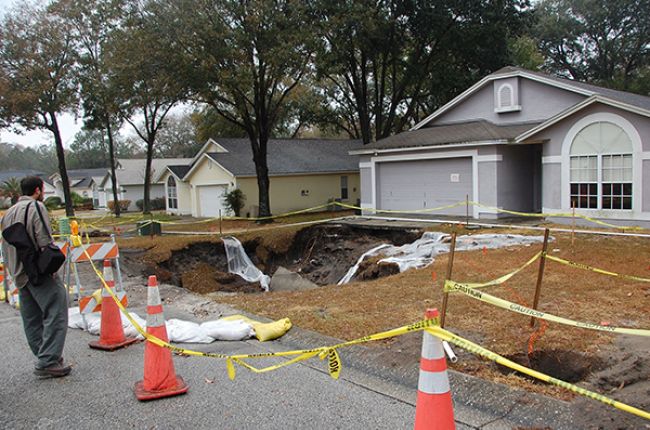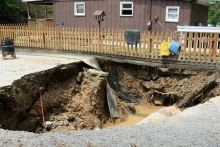
Florida Geological Survey's "Sinkhole Questions":
"When an underground cavity enlarges to the point that its ceiling can no longer support the weight of overlying sediments, the earth suddenly collapses into the cavity. A circular hole typically forms and grows over a period of minutes to hours. Slumping of the sediments along the sides of the sinkhole may take approximately a day’s time to stop. Erosion of the edge of the sinkhole may continue for several days, and heavy rainfall can prolong the stabilization. In the less catastrophic cover subsidence type of sinkhole, sediments slowly settle into underground voids in the bedrock. A bowl-shaped depression forms at the surface, typically over longer periods of time (sometimes as long as years)."
Learn More:
- Living with Karst (Booklet), American Geosciences Institute
This booklet defines "karst" and why karst areas (the most common locations of sinkholes) are important. It also presents karst-related environmental and engineering concerns, guidelines for living with karst, and sources of additional information.
- The Science of Sinkholes (Article), U.S. Geological Survey
Article and video explaining what sinkholes are and why and where they form.
- Digital Engineering Aspects of Karst Map (Map), U.S. Geological Survey
Map (including downloadable GIS data) showing the distribution of karst (and thus sinkhole vulnerability) in the United States. This map does not include information about areas where large underground cavities, fissures, tunnels, or other karst-like features have developed due to mining or other human activity.
- Catastrophic Sinkhole Collapse in Missouri (Factsheet), U.S. Geological Survey
2007 factsheet explaining the factors that influence sinkhole formation.

